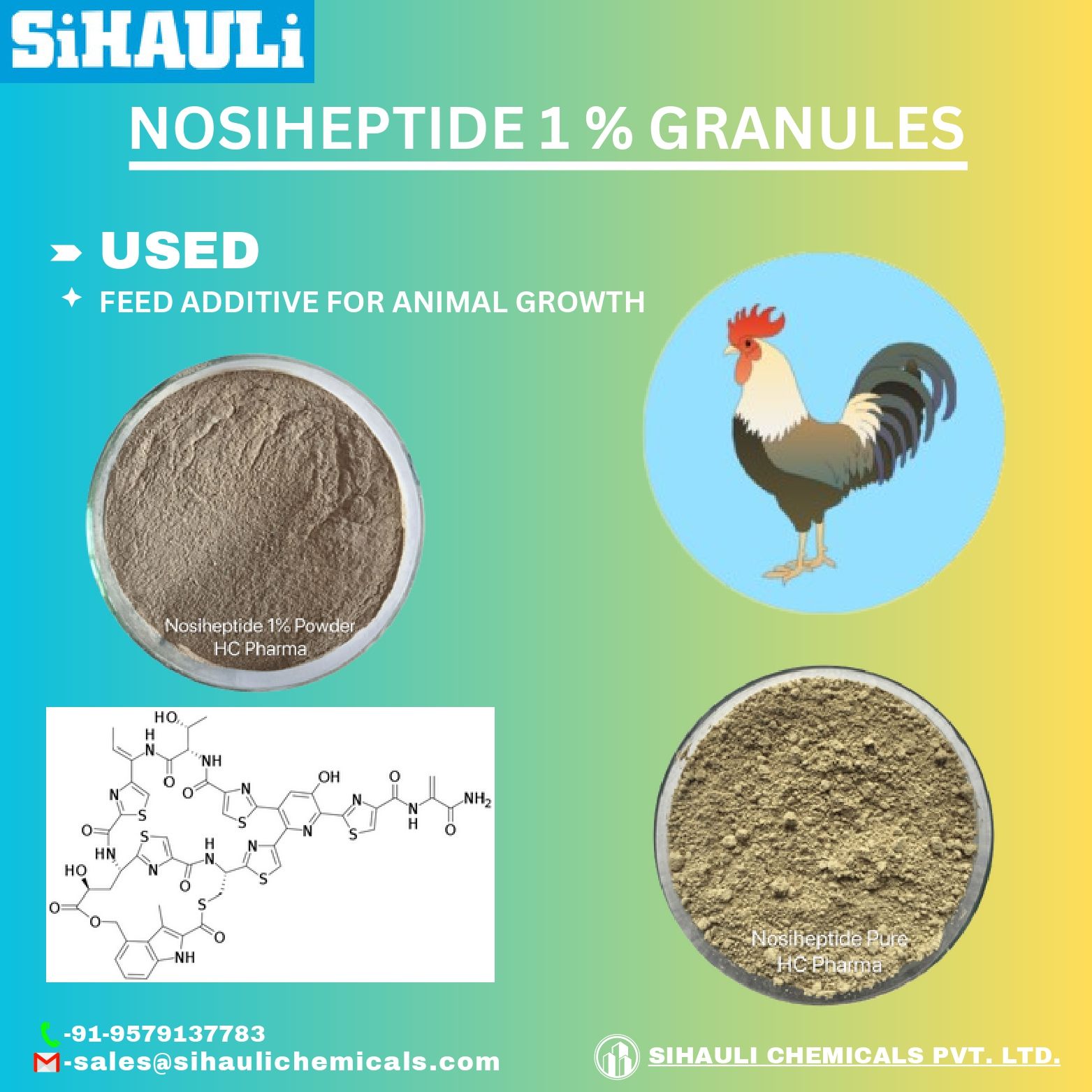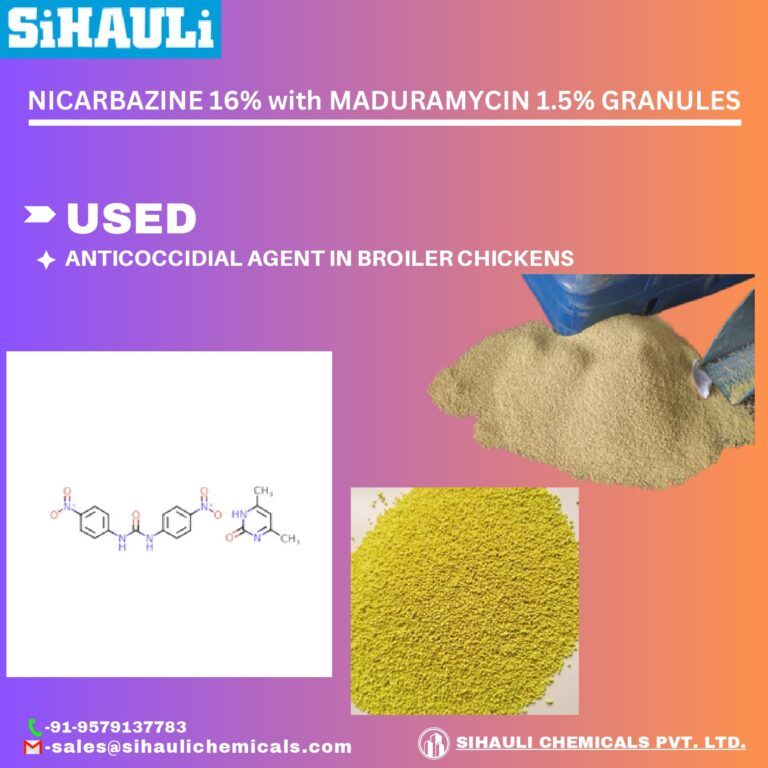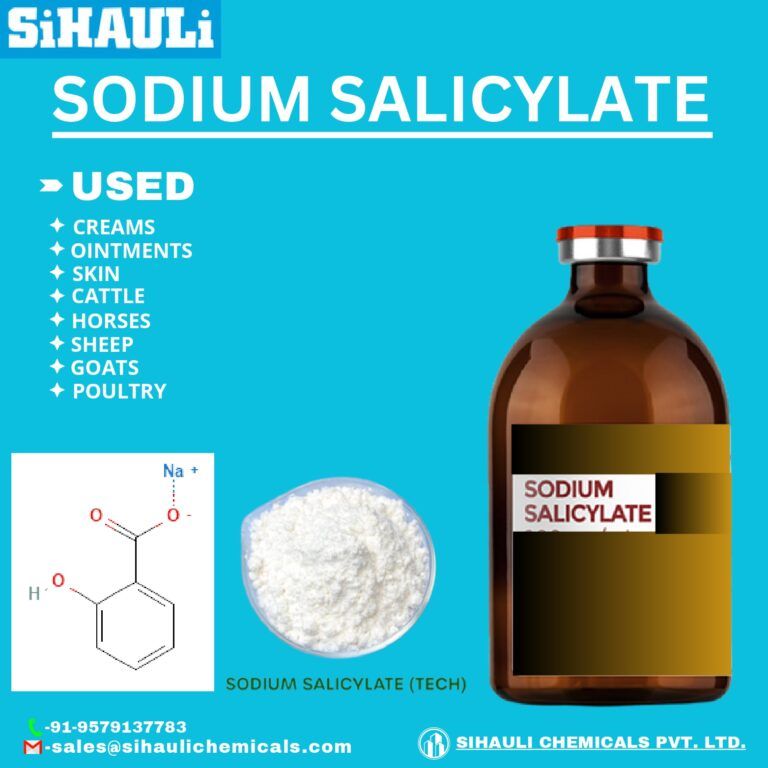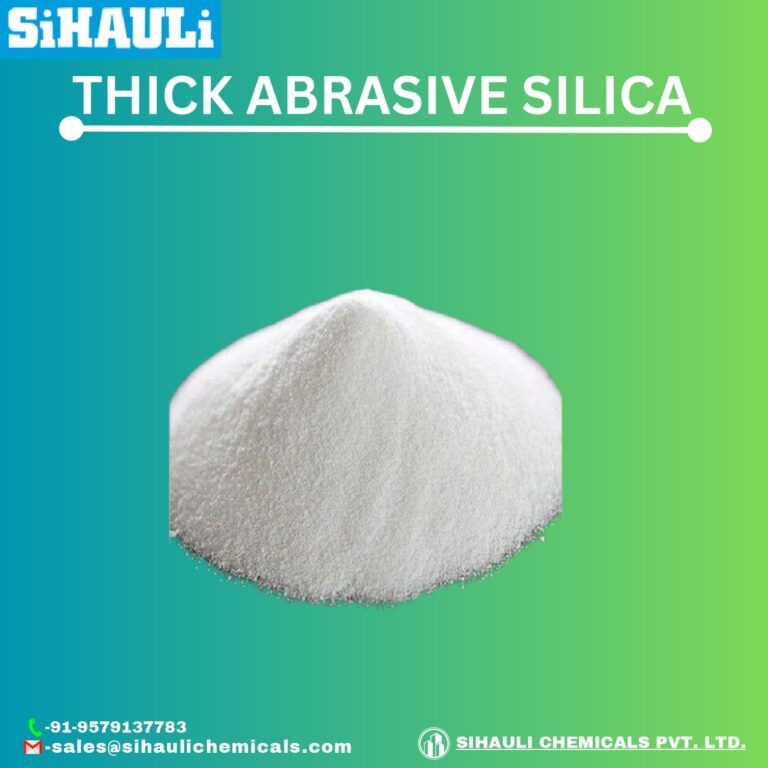Nosiheptide 1% Premix Nosiheptide Premix (1%, and other assay) Usage: Help the growth of livestock or poultry. Mix with feed. Main Functions: (1) Obviously help the weight gain of the livestock and poultry. Increase feed efficiency remarkably.
Nosiheptide Premix (1%, and other assay)
Usage: Help the growth of livestock or poultry. Mix with feed.
Main Functions:
(1) Obviously help the weight gain of the livestock and poultry. Increase feed efficiency remarkably.
(2) Nosiheptide Premix can prevent Diarrhea and inhibit piglet enteritis. Help more piglets survive.
Withdrawal period: Chicken 7days
Nosiheptide Premix
1.Nosiheptide is a kind of special sulfur-polypeptide antibiotic for animal, environmentally feed
additives.
Significantly promote the growth of livestock and poultry, improve the feed efficiency.
No resistance, no cross resistance with other antibiotics.
Little absorbed in animal intestinal tract, no drug residue.
It’s safe to human and livestock, environmental protection to the environment.
2.In the 1960s, Nosiheptide is separated from the Argentina soil by French scientists, is a good type of non-absorptive feed additives. It doesn’t affect the palatability of feed, it promotes the growth and
weight of pig, chicken, duck, shrimp, freshwater fish and other aquatic animals. Nosiheptide premix also improves the feed efficiency. France and Japan have officially put it to the market as feed additives, it is the antibiotic approved by Agriculture Ministry of China in recent years, it’ s used more and more times in animal husbandry.
3.Physicochemical property:
Nosiheptide premix is yellow-green material, powder or fine needle crystal, its melting point is 310-320 C(withdecomposition ).It’s soluble in chloroform, dimethylformamide, dimethyl sulfoxide,lightly soluble incarbinol, ethanol, acetidin and benzene,not soluble in water and petroleum ether.
4. Mechanism of action of Nosiheptide:
Nosiheptide has strong activity on against G- bacterium and G+ bacterium, especially staphylococcus.
The mechanism of action is restraining the protein synthesis. Control the bacteria in the low concentration; kill the bacteria in the high concentration. Nosiheptide resist the breeding of harmful bacterium in the intestinal tract, so it promotes the growth of livestock and poultry, improves the feed efficiency. No resistance, no cross resistance with other antibiotics. Small toxicity, safe to human and livestock. No drug residue, is a good type of non-absorptive feed additives.
5. Resistance
The test to Nosiheptide using staphylococcus and streptococcus shows, these two strains has no resistance.
b)The Sensitivity test to Nosiheptide using golden staphylococcus shows, Nosiheptide has no cross
resistance with other antibiotics. It shows that Nosiheptide won’t cause cross resistance.
6.The impact on the environment:
The half-life of discharged Nosiheptide in dejecta of pig and chicken is one month and 20 days, applied these dejecta as ingredients to plants,found that Nosiheptide has no drug residues in plant, and no inhibitory action on higher plan herbicide activity and insecticide activity. It has inhibitory action on part of some algae and soil bacteria. No hindered activity on the active sludge microbial, and no side effects. Therefore the impact on the environment of Nosiheptide is minuteness.
7. Residual property:
Feed the chicken 0-250mg/kg Nosiheptide for 8 weeks, feed the pig 0-500mg/kg Nosiheptide for 90days, slaughter them in medicine time or after the treatment of 0-7 days, the result shows, the residual quantity of liver, muscle, spleen, heart is lower than 0.025mg/kg.(Below the critical value).
Do test using C14 Nosiheptide, the test shows, most of Nosiheptide are discharged to dejecta, this proves that Nosiheptide plays a role in the intestinal but not broken down and absorbed, no drug residue in animal visceras.
Slaughter the chicken after 16, 48 and 72hs with the treatment of 2.5mg/kg, 5mg/kg, detect the muscle,
heart and other visceras with different methods, the result shows, the residual quantity of Nosiheptide
are all lower than 0.01mg/kg.
China Agricultural University (2008) does a test, the result shows; feed the pig 20mg/kg Nosiheptidefor 28days, no residue in muscle and other visceras.
Feed the Peneaux Vannamei 2.5mg/kg Nosiheptide for 90days, select samples after 12, 24, 48, 72 and
148hs with the treatment, the result shows, the residual quantity of Nosiheptide in muscle and head are
lower than 0.01mg/kg.
8. Safety:
China Agricultural University national veterinary drug residue reference laboratories does the safety
test to pig. Feed the pig 20-100mg/kg Nosiheptide for 28days, there is no adverse effect to the food,
action, breath and excretion. This shows, the range of 20-100mg/kg is safe to pig.
Small toxicity. Acute toxicity test shows, the LD of oral medicine to rat is more than 13060mg/kg, the
LD of hypodermic injection is more than 4160mg/kg. No toxicity in Clinical examination, blood test
and biochemistry examination.
Ames
Nosiheptide has no mutagenicity, the result of Ames mutagenicity test is negative
Nosiheptide has no teratogenicity. Compellently feed rat 1000, 2000 and 5000mg/kg Nosiheptide every day, the result of teratogenicity test is negative.
Safe to livestock. Feed 0-250mg/kg Nosiheptide to chicken and 0-500mg/kg to pig, the result shows,
there is no effect to reproductive performance and production performance.
Application of Nosiheptide premix in poultry:
Effect to weight and feed efficiency of chicken
Test 1: Nosiheptide can promote the growth of livestock and poultry, improve the feed efficiency and
survival rate. Overall, add 2.5-5.0mg/kg Nosiheptide to chicken feed is best.
Test 2: Add 1.25, 2.5, 5.0mg/kg Nosiheptide to chicken feed can promote the growth and improve thefeed efficiency, 2.5mg/kg is best.
Effect to weight and feed efficiency of duck
Test 1:Compare 5 groups: 0.625mg/kg Nosiheptide group, 1.25mg/kg Nosiheptide group, 2.5mg/kg
Nosiheptide group with 100mg/kg Aureomycin group and blank group,the result shows: Nosiheptide
can promote the growth of duck, improve the feed efficiency. Add 2.5-5.0mg/kg Nosiheptide is best.
Test 2: The result of 1000 ducks shows, add 0.5mg/kg and 1.0mg/kg Nosiheptide to duck feed can
promote the growth and improve the feed efficiency.
Application of Nosiheptide in pig:
Effect to weight and feed efficiency of pig
Test 1: Significantly promote the growth of piglet and grower, improve the feed efficiency and survival rate, prevent diarrhea. Add 2.5-20mg/kg Nosiheptide to piglet for 12 weeks can gain weight 5-20%, improve the feed efficiency 5-15%, and inhibit piglet enteritis.
Test 2: Add Nosiheptide to pig feed, the feed efficiency is highest in 5.5 mg/kg and heaviest in
6.8mg/kg, especially effective in winter.
Test 3: Add Nosiheptide, avilamycin and virginiamycin to pig diet for 36 days. The result shows, the
daily gain is higher than avilamycin and virginiamycin.
Effect to production performance and diarrhea rate of Nosiheptide and colistin sulfate. The result
shows, use Nosiheptide 5mg/kg together with colistin sulfate 40mg/kg can improve the daily gain,
prevent diarrhea.
China Agricultural University does the safety test to pig. Feed the healthy pig 20mg/kg, 60mg/kg and 100mg/kg Nosiheptide for 28days. The test of biochemical blood standard shows, there is
no adverse effect to the food, action, breath and excretion, no any adverse reactions.
Application of Nosiheptide in aquaculture production
Test 1: Add 2mg/kg and 3mg/kg Nosiheptide to Penaeus Vanmamei feed, the result shows, compare
with blank group and flavomycin group, add 2 mg/kg Nosiheptide is best, reduce the feed coefficient,
improve the protein efficiency.
Experts of Zhejiang University studied and found that 1.25-5mg/kg Nosiheptide can significantly
promote the growth of Penaeus Vanmamei, reduce the feed coefficient, add 2.5 mg/kg Nosiheptide is
best. In addition, Nosiheptide can improve the survival rate and increase anti-stress ability.
Test 3: Add 0.25-3mg/kg Nosiheptide to Tilapia feed, the result shows, the growth rate is higher
10.5-47.8% than blank group , the feed coefficient is lower 4.6-16.7% than blank group.
With growth and feed coefficient for the index, add 1.0mg/kg Nosiheptide to Tilapia feed is
best.
Zhejiang university tests the Growth Performance of weever.The result shows, add 1.25mg/kg
Nosiheptide can significantly promote the daily growth of weever, reduce the feed coefficient, promote the development of intestinal villi.
According to Japanese Positive List System rules, the highest residue limits within 0.03 mg/kg in
Muscle, fat, liver, kidney and other edible organization. So there is no residue in shrimp organization.




